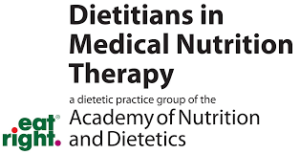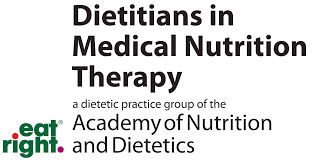What is achalasia?
Achalasia is a motility (movement) disorder of the esophagus, which is the tube that connects the mouth to the stomach. A muscle at the lower end of the esophagus called the lower esophageal sphincter (LES) controls the movement of food into the stomach. When people have achalasia, the LES doesn’t work properly and does not relax.
Why is diet change recommended?
When the LES is not working properly it causes food and drink to remain in the esophagus and not move into the stomach. Symptoms associated with achalasia may include difficulty swallowing, regurgitation, heartburn, weight loss, chest pain and coughing. An altered diet can help.
Getting started on nutrition therapy for achalasia
Adopt a soft textured diet. For more severe cases, a pureed or liquid diet may be needed.
Incorporate soft cooked, mashed or pureed foods; soups, smoothies and crock-pot meals (tender meats and vegetables).
- Smoothies and protein shakes are especially helpful when appetite or intake is low.
Sip small amounts of liquids with meals to ease swallowing and help food slide down the esophagus.
- Enjoy room temperature or warm liquids.
- Avoid ice cold drinks which can cause muscle spasms.
Add sauces and gravies to moisten food.
Take small bites, chew food thoroughly and limit stressful distractions at meal times.
Do not go to bed immediately after a meal. Allow about three hours after eating before laying down to prevent regurgitation and heartburn.
Eating healthy with achalasia
To get all your nutritional needs met and prevent weight loss, it may be helpful to eat three mini meals and two to three snacks daily.
Plan meals and snacks ahead of time.
Include protein at meals and snacks to maintain muscle and regulate appetite.
- Include a canned fruit cup (in natural juices or water) at meals.
- Peel and bake fruit (i.e. baked apples with cinnamon, berry crisp) for dessert.
- Eat applesauce-consistency fruit squeeze pouches for snacks or stir into yogurt.
- Fruit smoothies: blend frozen or fresh fruit with milk of choice and a protein (Greek yogurt, protein powder). Add a source of healthy fats (i.e. natural peanut butter or almond butter, ¼ avocado, 1 tsp chia seeds). Add a handful of spinach, canned/drained beets, or other vegetable for more nutrition.
- Frozen vegetables can be easily cooked or steamed until fork tender.
- Vegetable based soups will contain small pieces of tender cooked vegetables. Canned soup can be pureed or pulsed in the blender to break down the ingredients further. Pureed soups such as Pacific™ and Imagine™ brand are also fast & healthy. Add unflavored Greek Yogurt or protein powder to turn it into a meal.
- Grate vegetables such as zucchini or carrots into scrambled eggs, pasta, and sauces.
- Baked sweet potato or squash with butter can be mashed with a fork as a side dish.
- Fresh vegetable juice: Bolthouse Farms, Naked Juice, Suja or Blue Print Cleanse.
- Add vegetables to smoothies, along with fruit and protein source.
- Ham or turkey roll ups with fresh ripe or canned fruit.
- 1 cup very ripe melon with 1 oz fresh part-skim mozzarella cheese.
- Greek yogurt with ripe berries, applesauce or fruit squeeze pouch mixed in.
- Cottage cheese and canned pineapple or oranges.
- Chicken, egg or tuna salad eaten with a fork.
- Canned vegetable soup with beans.
- Scrambled eggs topped with avocado slices.
- Hummus and peeled cucumber slices.
Written by

Lori Welstead MS, RD, and Lauren Van Dam, MS, RD
DIGID Disorders of the Brain Gut Interaction Workgroup ©2021

Lori Welstead MS, RD, and Lauren Van Dam, MS, RD
DIGID Disorders of the Brain Gut Interaction Workgroup ©2021



